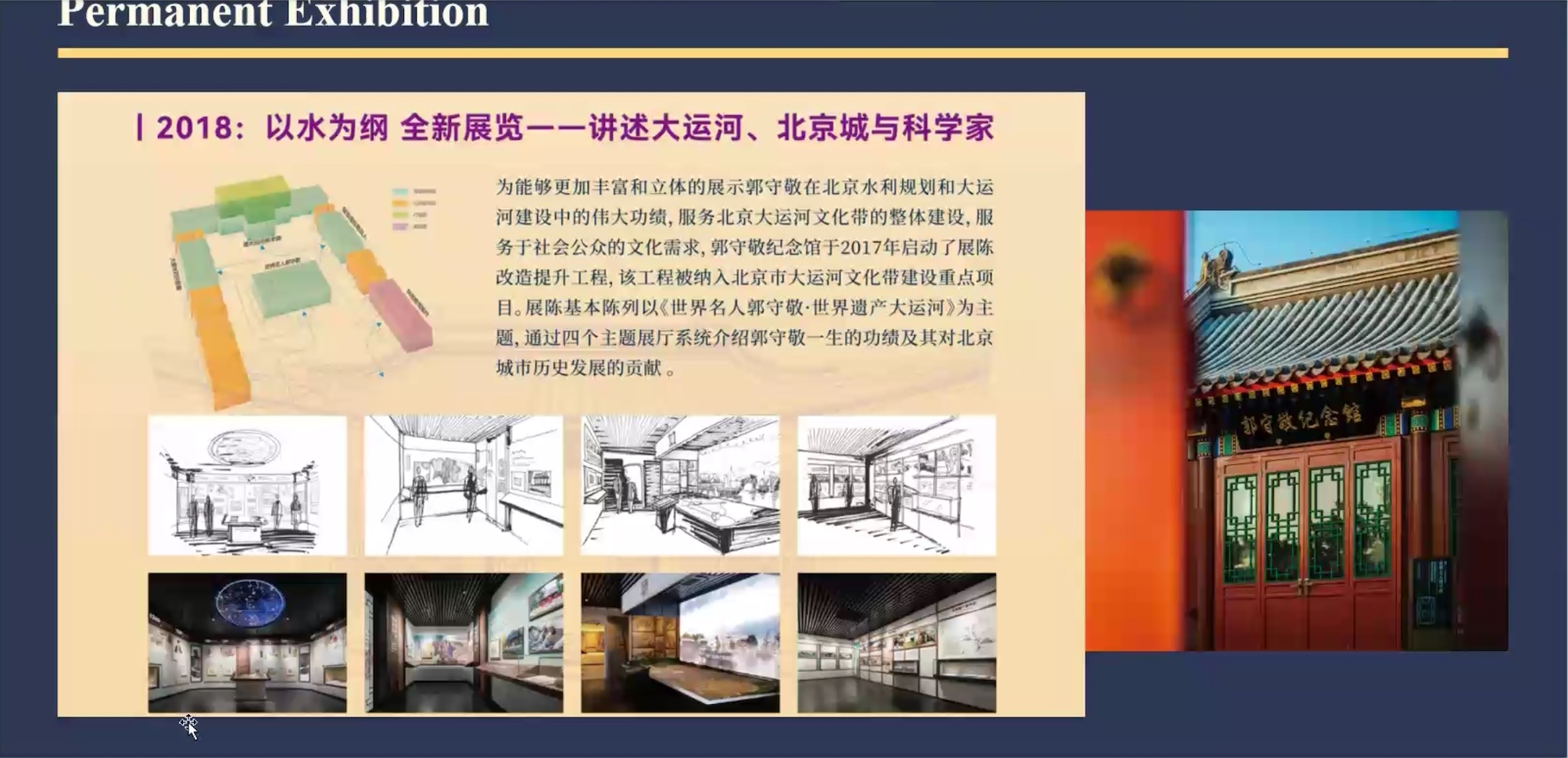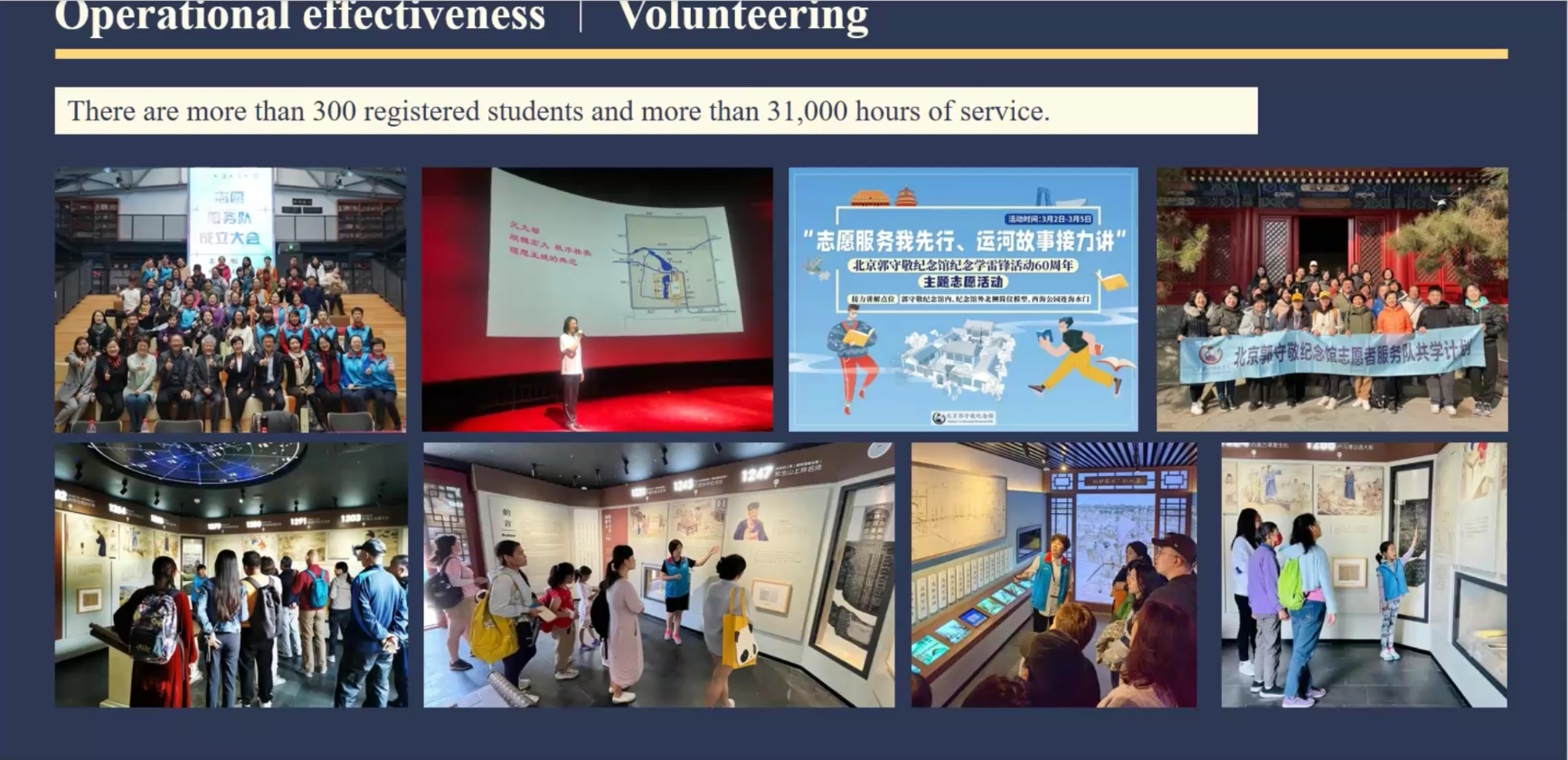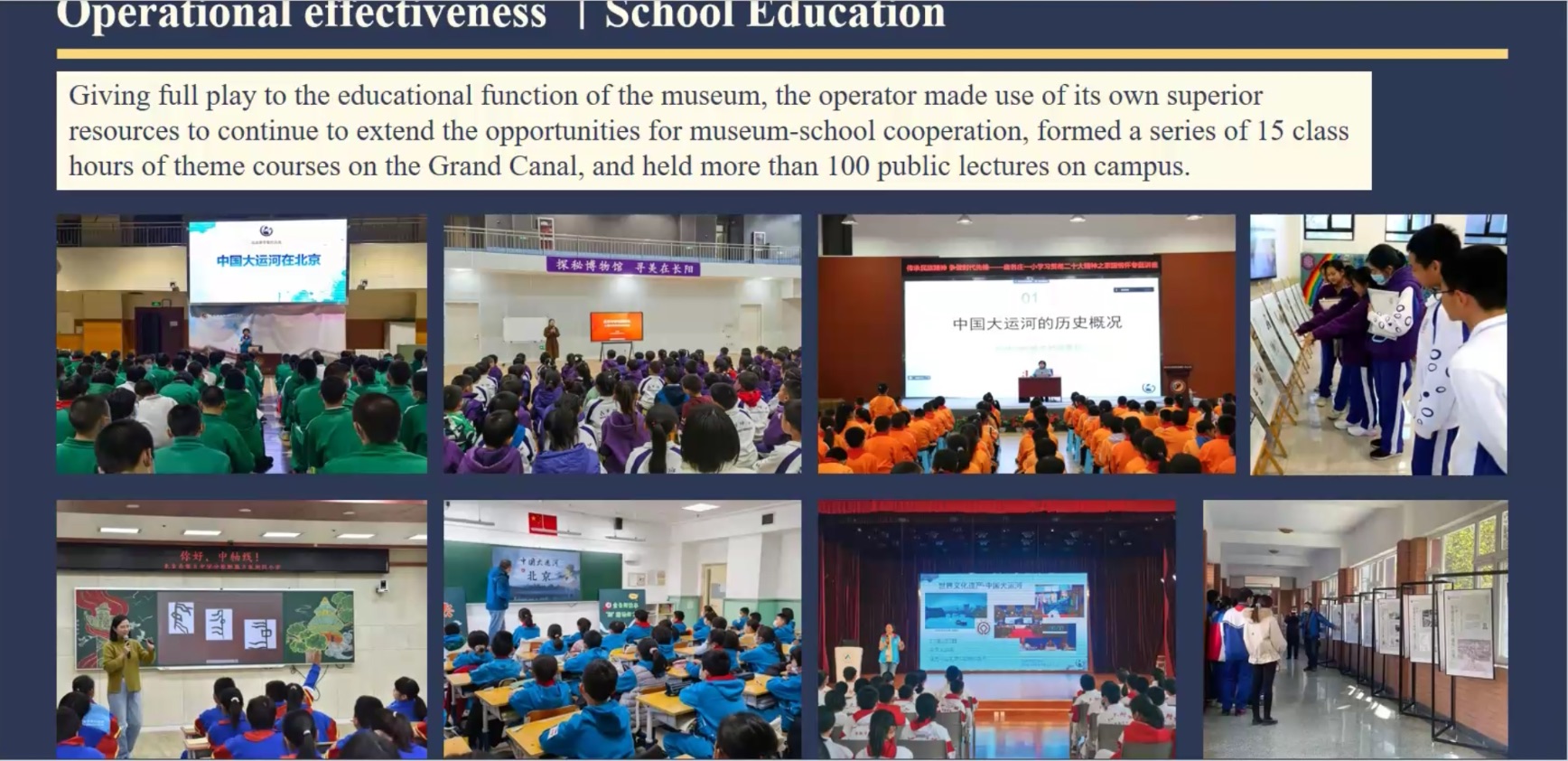Case Study
Beijing Guo Shoujing Memorial Hall. Public Education in Thematic Museums
Zhang Peng, Executive Director of Beijing Guo Shoujing Memorial Hall
Background
This case study explores the development of the Guo Shoujing Memorial Hall in Beijing, a small museum dedicated to the renowned ancient scientist Guo Shoujing. Through its integration of science, urban history, and community heritage, the museum has redefined its role from a traditional memorial space to a dynamic centre for education and engagement. Despite challenges such as limited space and resources, it has successfully leveraged digital technologies, volunteer participation, and creative public programmes to enrich the visitor experience. Its innovative “Information + Tour + Interaction + Integration + Management” (ITI) model provides an adaptable framework for small museums seeking to combine cultural preservation with public service and sustainable development.
The Guo Shoujing Memorial Hall is a thematic museum established in memory of Guo Shoujing, an outstanding Chinese scientist of the Yuan Dynasty. Located in Deshengmen West Street, Xicheng District, Beijing, occupying part of the Yuan-dynasty Huitong Temple, a former water-management shrine, adjacent to the scenic Shichahai area, blending cultural and natural landscapes harmoniously. Guo Shoujing (1231–1316) made remarkable contributions to astronomy, water conservancy, calendar systems, and instrument manufacturing, among other fields. He compiled the “Shoushi Calendar,” excavated the Tonghui River, and invented the Simplified Armilla, profoundly influencing the development of ancient Chinese science and technology. Through rich collections of cultural relics, models, illustrations, and multimedia displays, the memorial hall systematically presents his major achievements, serving as an important venue for promoting Chinese scientific civilization, patriotic education, and popular science activities.
In conducting public education, the Guo Shoujing Memorial Hall faced several core challenges, common to many similar thematic museums:
- Low Public Awareness and Relevance: Guo Shoujing, as a historical figure, is far less known than contemporary literary or artistic figures. The public is generally unfamiliar with his achievements, resulting in low motivation to visit and high “customer acquisition costs” for the memorial hall.
- Difficulty in Translating Specialized Content into Education: Subjects like astronomy and water conservancy are inherently complex. Traditional display methods (e.g., text panels, physical models) struggle to engage general audiences, especially youth and families, limiting educational effectiveness.
- Space and Resource Constraints: The memorial hall’s limited exhibition space and activity capacity, coupled with its status as a district-level museum, impose restrictions on funding, staffing, and professional curatorial capabilities.
- Double-Edged Geographic Location: While situated in the high-traffic Shichahai scenic area, most visitors are leisure tourists. Converting these “passersby” into “targeted audiences” remains a significant challenge.
Approaches
To address these issues, the memorial hall’s management, with support from the Xicheng District Government and relevant academic societies, set clear strategic goals and corresponding implementation methods:
- Enhance public awareness and engagement.
Method: Branded operations, IP development, and establishing strong connections with contemporary urban life. - Effectively translate and disseminate specialized content.
Method: Innovate educational formats, developing targeted and experiential educational products. - Overcome physical space limitations and expand service reach.
Method: Develop digital education initiatives and external partnerships to “extend” educational services beyond the museum. - Leverage geographical advantages for in-depth cultural and tourism integration.
Method: Integrate the memorial hall into the Shichahai–Grand Canal cultural belt, designing thematic study tour routes.
Resources
Rethinking Heritage Futures, Online Workshop “Improving the Visitor Experience”, 27 November 2024, Nottingham Trent University (NTU), Communication University of China (CUC).
Projects
1. Creating a Branded Matrix of Public Activities
The memorial hall established a consistent and appealing lineup of branded public activities.
- Shoujing Lecture Series: An ongoing series, now in its 54th session. Content connects current affairs with specialised topics, enhancing academic depth and public participation.
- Ruosi Dialogues: Held 8 times, these events foster idea exchange by inviting museum enthusiasts and science writers for relaxed, open discussions, deepening engagement with diverse communities.
- Canal Book Club: Held 11 times, these sessions share books related to water transport and Guo Shoujing, expanding the memorial hall’s influence.
- Holiday-Themed Social Education Activities: Events like “Celebrating the New Year at Shoujing Hall” and “Praising China, Inviting the Moon with Shoujing” merge traditional culture with science education, attracting family audiences.
- Expert-Led Popular Science Lectures: Collaborations with professional societies enhance authority. For example, during the 2025 “World Water Day & China Water Week,” experts from the China International Council for the Promotion of Science and Technology’s Water Engineering Technology Branch explained Guo Shoujing’s water management stories.
2. Deepening Museum-School Cooperation and Developing Immersive Study Programmes
The memorial hall actively collaborates with the education system to transform specialized content into engaging educational practices.
- Integration into Regional Study Tour Systems: Selected for the officially recommended study routes of the “Beijing Museum Season Study Month,” recognizing it as a designated study base in Beijing.
- Walking the Central Axis Thematic Study Activities: A model of museum-school cooperation, blending history, science, and ecology. Using immersive digital sandboxes and Yuan Dynasty star domes, children explore the wisdom behind Beijing’s city planning and water systems. During the 2025 summer activities, the director personally guided children in experiencing ancient measurement techniques, recreating water system layouts digitally for high interactivity and immersion.
- University Cooperation and Walking Ideological and Political Lessons: Partnerships with institutions like the China University of Geosciences (Beijing) integrate specialised visits with ideological and political education, creating walking ideological and political lessons.
3. Building a Collaborative Volunteer Service System and Digital Extensions
The memorial hall overcomes human and spatial constraints through volunteer development and digital projects.
- University Volunteer Partnerships: A stable collaboration with Beijing Normal University’s White Dove Youth Volunteer Association. Volunteers provide guided tours and create new media content (e.g., articles, videos), extending knowledge dissemination beyond physical limits.
- Spillover Effects of Volunteer Service: Volunteer experiences generate impact beyond the hall. For instance, a former volunteer applied Guo Shoujing’s achievements in university discussions, influencing peers’ historical perspectives and demonstrating secondary dissemination of the hall’s educational function.
- Digital Audio Projects: The first season of the audio program “The Grand Canal in Poetry,” launched on the China Media Group’s “Yun Ting” app, garnered 400,000 views/plays, successfully delivering canal culture in a modern, accessible format.
4. Integrating into Urban Cultural Contexts and Designing Thematic Cultural Routes
The memorial hall positions itself within Beijing’s broader historical and cultural landscape.
- Walking the Grand Canal Cultural Routes: As a core node of the Beijing Grand Canal Cultural Belt, the hall collaborates with travel agencies and study institutions to design guided tours from the hall to sites like Wanning Bridge and the Yuhe Ruins. Trained volunteers or professional guides narrate stories of Guo Shoujing and Beijing’s water systems.
- Open Application for Public Guided Tours: The Public Guide Application Entry allows approved cultural enthusiasts and guides to conduct thematic tours, promoting diversification and community participation in public education.
Challenges and Successes
Challenges
- Financial and coordination pressures from maintaining multiple branded series.
- Ensuring the sustainability of creative activity concepts to maintain long-term public interest.
- Aligning study content with school curricula in science and history requires ongoing communication and course development.
- Ensuring quality and safety when scaling activities for large student groups.
- Ensuring the professionalism and stability of volunteer teams requires significant management and training resources.
- Creating high-quality digital content that stands out amidst online competition demands professional planning and production.
- Ensuring content accuracy and educational value when collaborating with commercial entities and allowing public guides.
- Managing community relations to mitigate potential impacts from increased tourist flow in the Shichahai area.
Successes
- Established brand recognition, fostering public perception of the hall as a dynamic cultural exchange platform.
- Expanded social influence through media exposure and recognition within the cultural heritage sector.
- Served as a second classroom, providing practical learning experiences unavailable in traditional settings.
- Enhanced educational effectiveness by making abstract scientific principles intuitive and interactive.
- Expanded service capacity through volunteer teams, enhancing reception capabilities and educational diversity.
- Achieved cross-sector dissemination, penetrating university communities and online audiences, exponentially increasing public education impact.
- Transformed from a mere scenic spot into a cultural starting point, enhancing its value within the cultural tourism landscape.
- Strengthened real-world relevance by helping visitors intuitively understand how Guo Shoujing’s hydraulic engineering shaped modern Beijing and Shichahai, fostering cultural identity.
Discussion
The Guo Shoujing Memorial Hall demonstrates how a small thematic museum can overcome resource and awareness limitations by deeply integrating education, community, and urban cultural contexts, specifically through:
Creating branded public activities that transform specialized scientific content into ongoing, participatory experiences, building stable public connections.
Deepening museum-school cooperation and immersive study programs, using digital technology and field exploration to turn the memorial hall into a “second classroom” for youth understanding history and science.
Building a collaborative volunteer system and digital content, leveraging university partnerships and audio programs to break physical boundaries and achieve cross-sector knowledge dissemination.
Integrating into urban cultural routes, positioning itself as the “starting point” of Beijing’s Grand Canal cultural belt, activating the connection between history and contemporary life through walking tours.
By doing so, the Guo Shoujing Memorial Hall has not only successfully enhanced its visibility and influence but also proven that small museums can become dynamic platforms connecting specialized heritage with public understanding through educational innovation and open operations, securing an irreplaceable position in the contemporary cultural education ecosystem.
Further Resources
Websites:
Images
Image Credit: Zhang Peng, Executive Director of Beijing Guo Shoujing Memorial Hall


